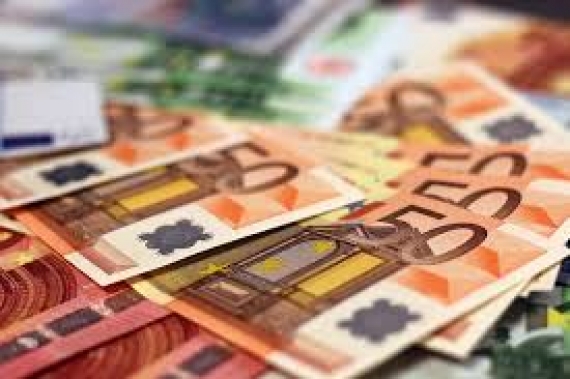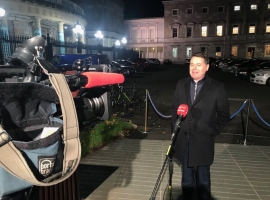
The euro fell to near three-month lows against the Swiss franc on Wednesday as fresh data indicating a slowdown in European business activity cast a shadow over the timing of the central bank's rate hike, while concerns over Italian politics rose.
The euro's weakness also spilled over to the dollar, falling half a percent on the day, but broader risk aversion kept the dollar on the back foot against the franc and the Japanese yen.
The yen surged 1.2% against the dollar, set for its biggest daily rise in more than a year, as a wave of caution swept currency markets a day after U.S. President Donald Trump tempered optimism over progress made in trade talks with China.
Carry trades, where investors borrow in relatively low yielding currencies to invest in higher-yielding ones, came under pressure with the euro/swiss franc falling to its lowest levels since early-March.
The euro has unwound all of its rally against the franc since the Italian elections as the prospect of a spendthrift coalition government taking shape in Rome unnerved investors.
"The euro is coming up against some structural headwinds as the PMI data shows no signs of picking up while the Italian situation is also weighing on sentiment," said SEB senior currency strategist Richard Falkenhall.
Currency derivative markets are signaling further weakness for the euro with one-year risk reversals on the single currency -- a gauge of demand for options on a currency rising or falling -- dropping to a seven-month low on Wednesday.
One year risk reversals fell to minus 0.4 after being in positive territory as recently as Monday, indicating that demand for euro puts has surged to protect downside risks, according to traders.
Morgan Stanley strategists said the euro's recent weakness could prompt overseas investors to hedge their bond and equity investments in Europe, which could add further downside pressure on the euro.
"The euro/Swiss franc cross encapsulates the growing risk premium that investors are placing on the euro in recent days and we may see further downside for now," said Alvin Tan, a currency strategist at Societe Generale in London.
While the dollar against a basket of its rivals rose 0.4% to 94.00, it weakened 1.2% and 0.6% against the Japanese yen and Swiss franc respectively.
Stocks tumbled and the yen gained broadly after Trump said on Tuesday he was not pleased with recent trade talks between the United States and China, the world's two biggest economies.
The euro fell to a six month low after German PMI data fell to a 20-month low indicating that economic momentum in Europe's biggest economy was faltering.
The euro/Swiss franc fell 0.7% to 1.1601 francs per euro, its lowest level since March 6.
The currency pair, a proxy for risk appetite within Europe, has fallen nearly 3% since May 14 as concerns of a fiscally profligate new coalition government in Rome has raised concerns of a showdown with the European Union.
The likelihood of a government comprised of the anti-establishment 5-Star Movement and the far-right League has pushed Italian 10-year yields up nearly 60 basis points since the start of May. The bulk of that move has been over the past week.
The safe-haven yen also rose against other currency crosses and surged against the Turkish lira, amid talk of Japanese retail investors selling the lira as stop-loss levels were hit.
The yen tends to rise in times of market turbulence since Japan is the world's largest creditor nation and traders tend to assume Japanese investors would repatriate funds at times of crisis.
Investors are now looking to the release on Wednesday of the Fed's minutes from its most recent meeting, when it kept interest rates steady.
In its post-meeting statement issued in early May, the Fed also said inflation had "moved close" to its target and that "on a 12-month basis is expected to run near the Committee's symmetric 2 percent objective over the medium term." (Reuters)
Source: www.businessworld.ie
















